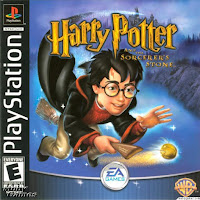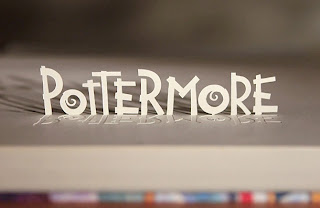Mattias Adolfsson is a freelance Illustrator living in Sigtuna just outside Stockholm Sweden. Originally he had odd jobs which linked to his Masters of Fine Arts in Graphic Design, at HDK, school of arts and crafts Gothenburg. This lead him to work within the computer games industry. He first worked with a small game company and did jobs like game design and making the visuals. He even made a game called Kosmopolska 1998. Then he moved on to work for a larger company. The company worked within EA. These jobs didn’t stimulate Adolfsson as he worked with more technical, doing jobs like programming which lead to him leaving the gaming industry in summer 2007.
Working at home in his converted garage Adolfsson works at least 5-6 hours a day. He fits his work and family life together. I am mostly interested in his surreal architecture pieces. Normal everyday activities like walking and jogging outside generate Adolfsson’s interesting ideas. He does’t have a clear image in his head when he starts and he allows his drawings to evolve. He admitted working so spontaneously can sometimes be a problem, especially when he starts drawing on a small piece of paper and he need to lead it onto another.
 He doesn’t use photo references, only sometimes for commissioned pieces. He either used his own observational studies or allow the drawing to create itself.
He doesn’t use photo references, only sometimes for commissioned pieces. He either used his own observational studies or allow the drawing to create itself. For inspiration he listens to american university lectures. One of these lectures was about the illustrations in Tolkien’s books. Traveling is another big influence. He likes old fashioned buildings, especially with a history. Visiting any old town inspires Adolfsson to draw instantly. When asked where he would like to travel to next he answered Scotland or anywhere with a history. Adolfsson did originally start out to want to be an architect. However his passion for old fashioned buildings did not link well with creating more modern structures.
He doesn’t necessarily created his illustrations to sell. He likes to work with his originals as much as possible before selling them on. Alot of his illustrations are held within his moleskin sketchbooks.
His Moleskin sketchbooks have become a form themselves. These personal objects are final pieces themselves with many of them being displayed in many exhibitions. They are small sketchbooks jam packed with fascinating original drawings. Tiny details and wonderful watercolors. He even features on the official moleskin website. Moleskin uses Adolfsson’s creativity to advertise their products. They put across the idea that maybe you could be as creative and draw like Mattias Adolfsson if you also had a moleskin sketchbook. Adolfsson has also designed a cover for a Moleskin 2012 weekly planner.
 He recently released his first personal book, published by Sanatorium. It’s called “The first in line”, which is based on his sketchbooks,. Its a 160 page hardcover. A collection of his beautiful imaginative sketches. Full of ideas and wonderful characters.
He recently released his first personal book, published by Sanatorium. It’s called “The first in line”, which is based on his sketchbooks,. Its a 160 page hardcover. A collection of his beautiful imaginative sketches. Full of ideas and wonderful characters. “Mattias’ brain is where Tim Burton meets Richard Scarry. His drawings are elegant and witty and insanely imaginative but most of all they are enormously inspiring” Danny Gregory
Danny Gregory, illustrator who is the managing director of a major NY ad agency, created award winning campaigns, author of 5 books and his illustrations have appeared in the New York Times and many other publications.
Mattias Adolfsson’s drawings have an incredible amount of detail. Every time you look back at his drawings you see something different. A new window, a new button. This excites me. However it is not just the detail. I could go into a gallery and look at a detailed study of a building and i would not feel the same. His buildings are his own inventions. They feel alive and each one has it’s own personality. His architecture is allowed to physically move, something that being an architect would not have allowed him to do. Being an architect may have limited his imagination. He is a successful illustrator because he balances both skill and concept well together.
Adolfsson describes his process as “medieval”. With so many digital elements used today, Adolfsson likes to stay away from the digital world. Also working within the game industry has put him off. He used watercolours and ink. His fountain pen is his favourite tool. This must help him to be so spontaneous as with inks you cannot remove the marks you have made with a rubber like with pencil. So you have to be brave and just go with it.
The fountain pen he use now is a Namiki Falcon with a fine nib. He has also made a series of illustrations using coffee. Most of his illustrations remind me of old fashions children book illustrations. This style reflects his interest with older architecture.
Two of Adolfsson’s main inspirations are Piranesi and Kjell Aukrust.
When looking at both artists i could see a visual link with Adolfsson and Kjell Aukrust’s work most. Aukrust is most famous for his work on the Norwegian animated film “Pinchcliffe Grand Prix”. Adolfsson first watched this animated children’s movie when he was 10 years old. This is obviously something that has stuck with Adolfsson. Adolfsson even did his own version of the car.
Piranesi work is alot more detailed. More shading involved. However he is similar to Adolfsson as they both in someway started out in the architecture world. As one of the greatest printmakers of the eighteenth century, Piranesi had practical training in structural and hydraulic engineering and also had the knowledge of perspective construction and stage design. Although not being very successful with architectural commissions all this knowledge became useful for his art works. Allowing him to create complex buildings that could only exist in dreams.
Although Piranesi is most famous for his views of the ruins of ancient Rome. I personally like his Prison’s the most. They are more complex and mysterious. They hold movement and remind me of scenes in movies today. This Prisons have influenced movies like Blade Runner and the moving staircases at Hogwarts in Harry Potter. In today's architecture, you see Piranesi's imagination in the Tate Modern.





























